Google Analytics vs Mixpanel
May 25, 2023 | Author: Sandeep Sharma
40
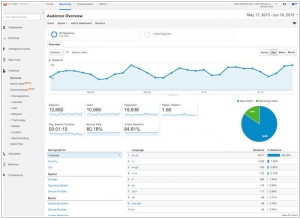
Google Analytics lets you measure your advertising ROI as well as track your Flash, video, and social networking sites and applications. Google Analytics shows you the full customer picture across ads and videos, websites and social tools, tablets and smartphones. That makes it easier to serve your current customers and win new ones.
17

Any question you can ask about your data, Mixpanel can answer. There are many metrics that measure engagement; page views are not one of them. Make your product better by measuring actions, not page views. Mixpanel's power lies in giving you the ability to learn more from your data by being able to ask increasingly important and complex questions. Most analytics products limit insights to basic trend lines, showing for example "number of homepage visits" over time. Mixpanel goes further by enabling you to ask more of your data.
Google Analytics and Mixpanel are both popular analytics platforms that help businesses gain insights into user behavior and track key metrics. Google Analytics is a comprehensive web analytics tool that offers a wide range of features, including audience segmentation, acquisition tracking, goal setting, e-commerce tracking, and conversion analysis. It is widely used and integrates seamlessly with other Google products. Google Analytics is suitable for businesses of all sizes and provides a holistic view of website or app performance. On the other hand, Mixpanel is a user analytics platform that focuses on event-based analytics and user engagement tracking. It enables businesses to track and analyze specific user actions, understand user journeys, and optimize product features. Mixpanel emphasizes its real-time reporting and advanced segmentation capabilities, making it particularly valuable for businesses seeking detailed insights into user behavior.
See also: Top 10 Web Analytics software
See also: Top 10 Web Analytics software
Google Analytics vs Mixpanel in our news:
2023. Mixpanel moves into marketing data with its latest product
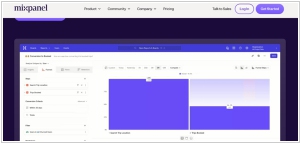
Mixpanel has traditionally offered product teams information about product usage, but as third-party data and cookies have come to an end, product data has become more valuable to other departments within the company. As a result, Mixpanel has developed a new product called Mixpanel Marketing Analytics, which makes it easier for marketing teams to access this data. This enables marketing teams to use the data to gain a better understanding of customers and improve their overall experience. Mixpanel has streamlined the querying process and created job-specific templates within the interface to make it easier for both product and marketing teams to access and utilize the data in a way that is meaningful to them.
2020. Google Analytics 4 allows to combine website and mobile app statistics
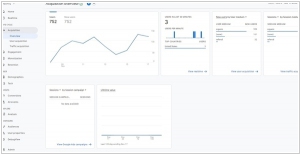
Google has introduced a major update to its website analytics platform, Google Analytics 4. The key highlight of this update is the inclusion of a new resource type called App + Web. This feature allows users to combine data from both websites and mobile applications, enabling the creation of unified reports for comprehensive analysis. The functionality of analytics tools has been significantly revamped, with improved visualization of user behavior and the adoption of a new model called "Event + Parameter." Notably, the updated platform now offers enhanced capabilities for online stores. Users can create user groups based on the likelihood of placing an order or leaving the website within the next seven days. It is important to note that the option to continue using the previous version, Universal Analytics (UA), is still available. Users have the flexibility to work with both Universal Analytics and Google Analytics 4 simultaneously by creating new resources with dual analytics capabilities (UA + GA4). This dual approach is designed to accommodate users who may find exclusive use of the new tool less convenient in certain scenarios.
2016. Google Analytics adds automated insights
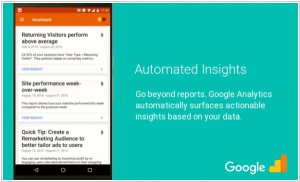
Google Analytics has introduced enhanced functionality on iOS and Android platforms, allowing users to easily identify crucial trends within their data. On the Assistant screen, users will now have access to automatically generated insights. For instance, if there is a sudden surge in new users on your website or app, Google Analytics will prominently highlight this information and provide details regarding the source of these new users. Likewise, for e-commerce companies, it can pinpoint the products experiencing the most significant increase in sales. Although Google Analytics was already tracking this information, it is now presented in a concise and easily digestible card format. This enhancement enables businesses to swiftly access the relevant information without the need to navigate through multiple pages, reducing the chances of overlooking important data changes.
2016. New Google Analytics app improves user experience
The most recent update of the Google Analytics app (version 3.0) introduces several features inspired by chat platforms. Google has streamlined the app's navigation, resulting in a cleaner interface that enhances the visibility of reports. Metrics and dimensions are now displayed within scorecards, which bear a resemblance to the widgets found in Google Analytics dashboards. These scorecards present a concise overview of the top dimensions within a specific report. By utilizing familiar tablet and smartphone user behaviors, such as swiping, users can easily navigate to their desired dimensions. The condensed listing of scorecards also facilitates the effortless discovery and bookmarking of reports.
2015. Google Analytics adds Calculated Metrics
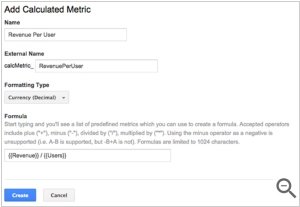
Google has introduced a new feature in Google Analytics called Calculated Metrics. This feature enables users to create custom metrics based on existing metrics within Google Analytics. It eliminates the need to navigate away from the report, streamlining the process of performing calculations. Essentially, Calculated Metrics serves as a convenient tool for adding compound metrics that frequently arise in business intelligence discussions. For instance, an e-commerce retailer could generate a currency conversion metric by multiplying the Revenue metric from Google Analytics reports with the current conversion rate. To access Calculated Metrics, users can find it in the admin panel under the view column.
2015. Mixpanel introduced codeless mobile analytics
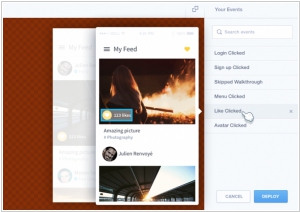
Mobile analytics service Mixpanel has introduced a new feature designed to simplify the customization of its analytics tools for mobile businesses, eliminating the need for additional code. With the introduction of Codeless Mobile Analytics, customers can utilize a user-friendly point-and-click interface to identify and track specific interactions within their Android or iOS apps. Once the Mixpanel SDK is installed, any subsequent modifications can be implemented immediately without requiring an update or approval from the App Store. This empowers optimization, testing, and marketing teams to make adjustments to their app analytics dashboard independently, without relying on developers for assistance.
2014. Mixpanel adds mobile A/B testing to its analytics platform
The web and mobile analytics service Mixpanel is unveiling a new feature today, catering to mobile developers seeking to experiment with different variations of their applications. Making modifications to the app is a straightforward process. For instance, relocating a button is as simple as dragging it, while implementing more advanced changes, such as altering in-game physics, remains relatively speedy. This simplicity is crucial as it enables marketers, product managers, and non-engineers to utilize these tools as well. By eliminating the need to rely on developers for testing promising ideas, the process becomes more accessible. Moreover, the A/B testing service is seamlessly integrated with Mixpanel's analytics platform, particularly leveraging user-specific data. This integration facilitates targeted testing by allowing changes to be tested on specific user groups.
2014. Google Analytics is available on iPhone
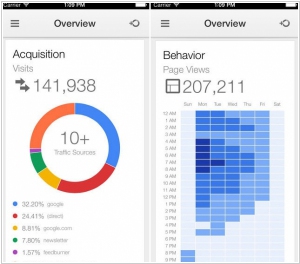
After more than two years of launching Google Analytics for Android, Google has now introduced a version of Google Analytics specifically designed for the iPhone. This app enables users to conveniently monitor their website analytics, including real-time visitor reports, directly from their smartphones. In addition to providing real-time and time-based reports, the app offers insights into user behaviors, conversions, and more. The user interface (UI) of the app aligns with the aesthetic of other Google apps available for iOS. Moreover, the app leverages the sign-in capabilities of Gmail, Google+, and the standard Google app for iOS. It's important to note that Google Analytics for iPhone is currently not optimized for iPad, but there is hope that future updates will include support for iPads.
2014. Google Analytics gets brand new E-Commerce section
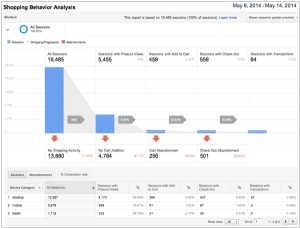
Google is introducing a comprehensive overhaul of its Google Analytics E-commerce, focusing on delivering insights throughout the entire customer journey, going beyond just the purchase stage. The updated version includes new metrics such as product detail views, 'add to cart' actions, clicks on internal campaigns, the effectiveness of internal merchandising tools, the checkout process, and the final purchase. Additionally, users can now create audience segments directly from funnel reports to analyze user actions, including cart and product page abandons. Funnels are accessible at the device category level, as depicted in the screenshot below.




